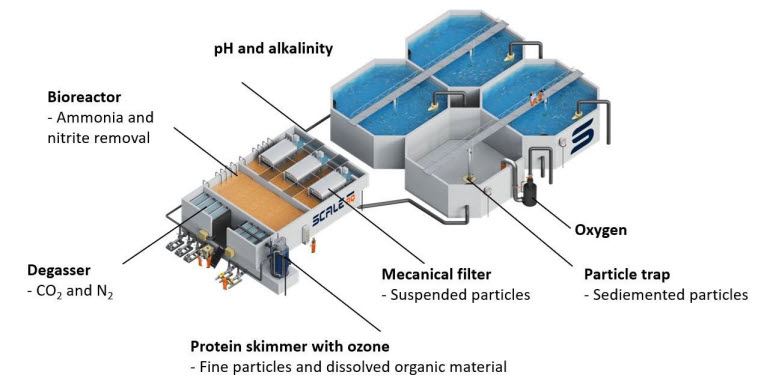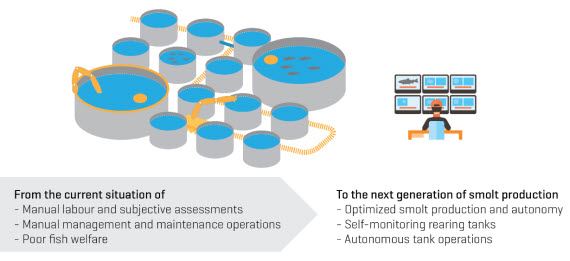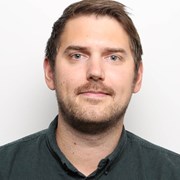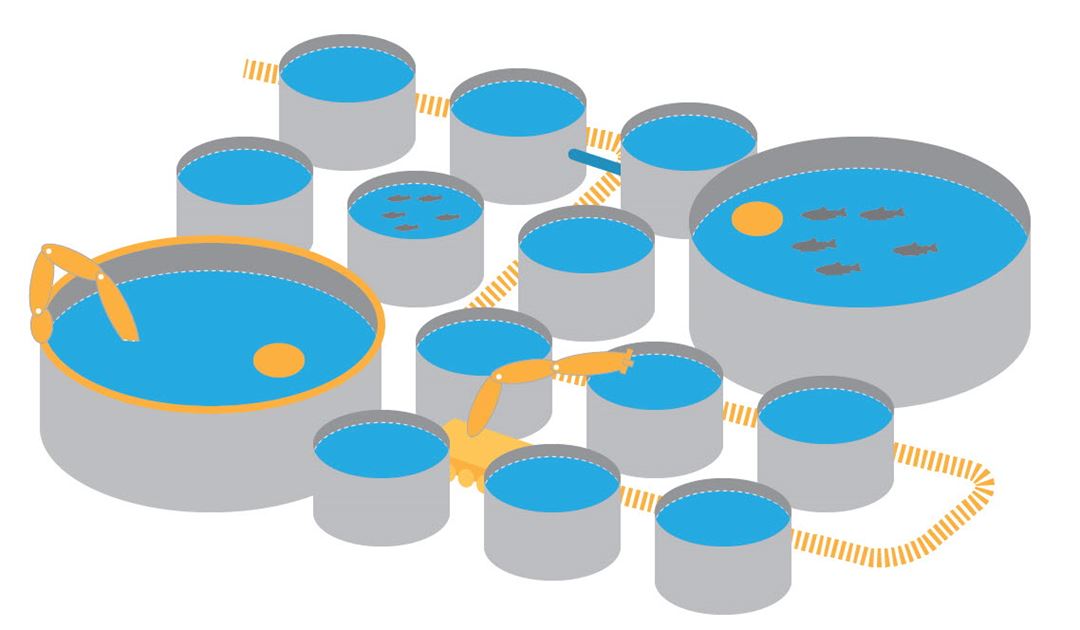The ultimate vision of AUTOSMOLT 2025 is to adapt and develop a holistic approach as a solution for the next generation of smolt production by applying the principles of Precision Fish Farming (PFF) at different stages of the smolt production cycle, thus bringing smolt production closer to realization within the framework of Industry 4.0. This entails increasing the level of autonomy and objectivity in smolt production operations to reduce dependencies on manual labour and subjective assessments, and to improve accuracy, precision and repeatability.

Present day smolt production plants are still based on the same management principles and methods as the first generation of such facilities established in the 1980's, just in bigger scales. This is seen in that several of the most common cost driving operations, such as moving and sorting fish (e.g. internal logistics connected to vaccination), washing and disinfection of rearing tanks and general animal husbandry, are manually executed. Existing production sites are also physically large, meaning that the workers often need to spend a considerable amount of their daily work time moving between different parts of the facility to perform their tasks. Today, a general trend in aquaculture industry is shifting production methods from manual operations and experience-based reasoning towards a more objective approach using intelligent sensors in combination with mathematical models and decision support- and autonomous systems in different stages of production. Autosmolt2025 will create the foundation for future unmanned, self-rearing and cost-effective smolt production systems (Figure 1).

The project will carry out research within four main areas:
- Optimized smolt production and autonomy: Enabling new services and business models for the next generation of smolt production: new and updated structures for management, organisation, working conditions and competence by enabling remote and autonomous production, monitoring and control in smolt facilities.
- Self-monitoring rearing tanks: Enabling technologies for production monitoring: generate knowledge fundamental for realization of fully autonomous smolt production.
- Autonomous tank operations: Unmanned operations and possible applications: creating the foundation for the fully unmanned smolt production sites of the future.
Goals
The primary objective of AUTOSMOLT 2025 is to adapt a holistic approach to smolt production, through development of novel technology for data collection and -analysis, autonomous operations and maintenance. This will enable more standardized, predictable and intelligent smolt production in the future.
- Secondary objective 1: Develop a holistic approach and derive specifications, conditions and requirements for the process control system required for optimized and autonomous smolt production facilities.
- Secondary objective 2: Develop sensor packages and algorithms for online data collection and -processing of environmental conditions and welfare related parameters for self-monitoring rearing tanks in smolt production.
- Secondary objective 3: Develop concepts for modular and flexible robotic tools and tool carriers enabling autonomous tank operations.
- Secondary objective 4: Validate technologies, methods and concepts developed in the project through laboratory and full-scale demonstrators featuring case studies relevant for real-world smolt production.
Partners
The consortium behind the AUTOSMOLT 2025 project is built around:
- A global leader within aquaculture technology (Scale Aquaculture AS).
- Three salmon farming companies (Sinkaberg-Hansen AS, Salmon Evolution AS and Andfjord Salmon AS).
- World-leading suppliers of smolt production tank systems (Brimer AS).
- Autonomy and sensor technology (Wago Norge AS, Festo AS and Posicom AS).
- Two research partners (SINTEF Ocean AS and NTNU).
Budget
- 14.4MNOK
This project is funded by The Research Council of Norway.

